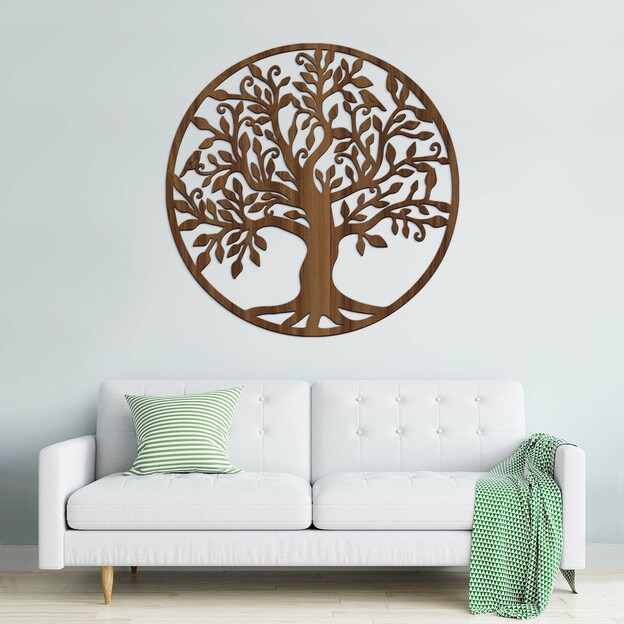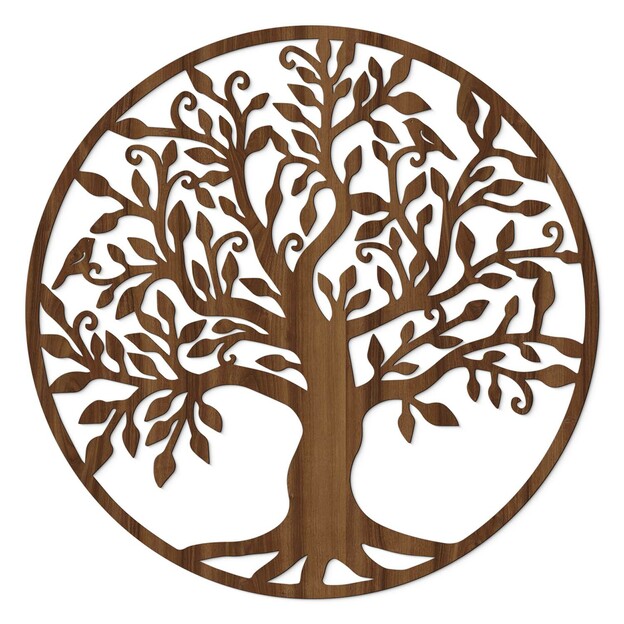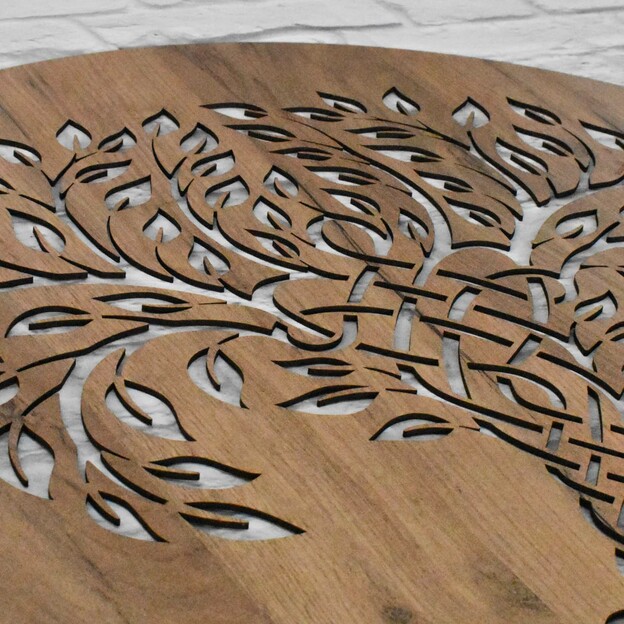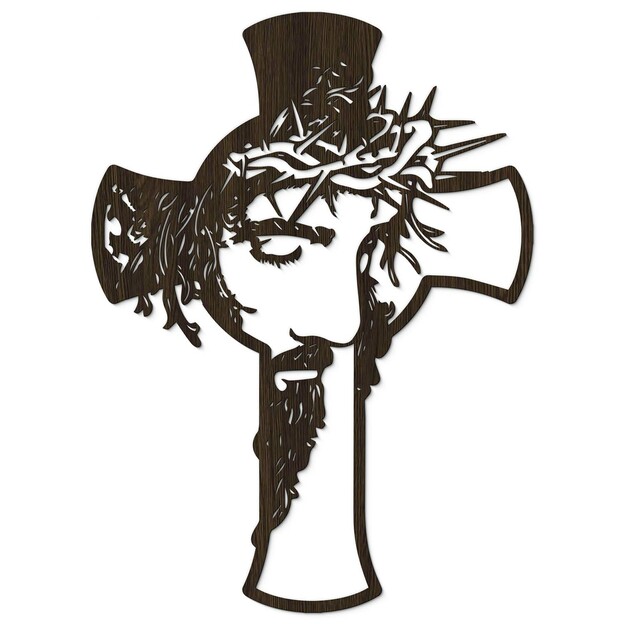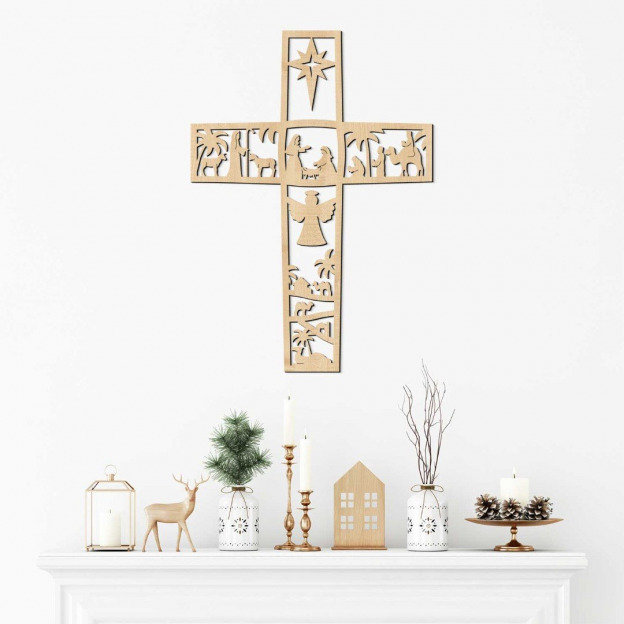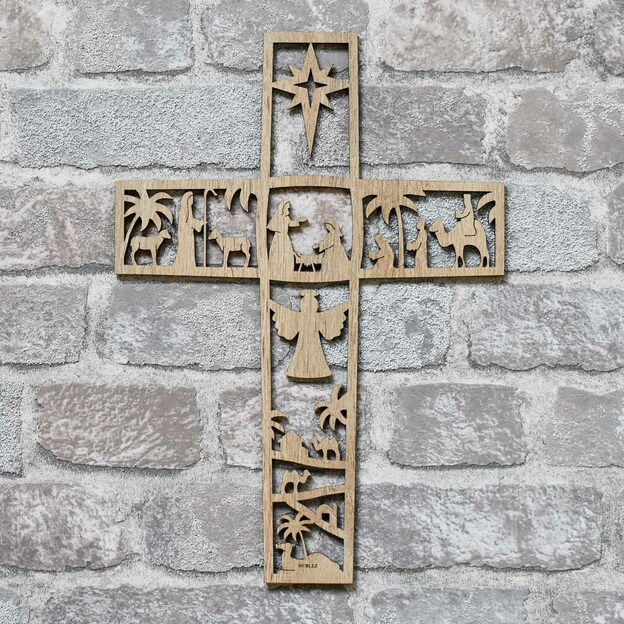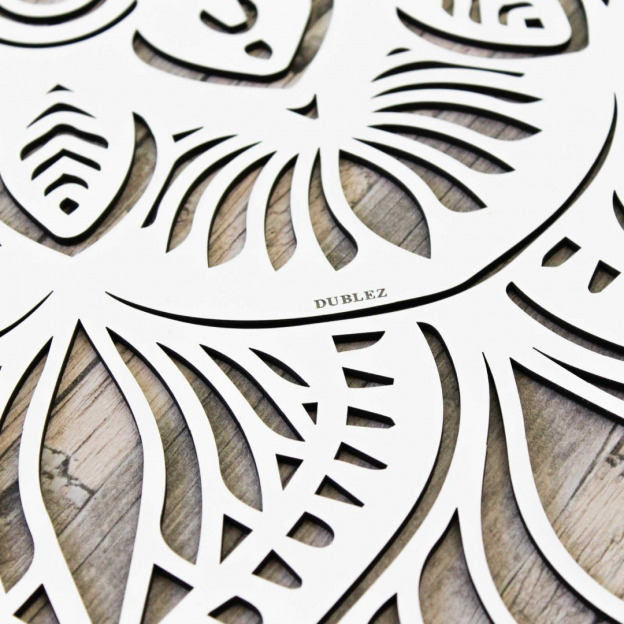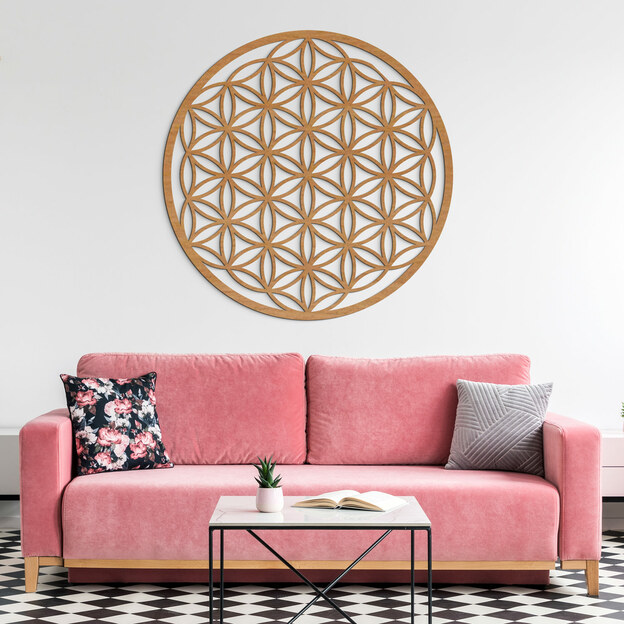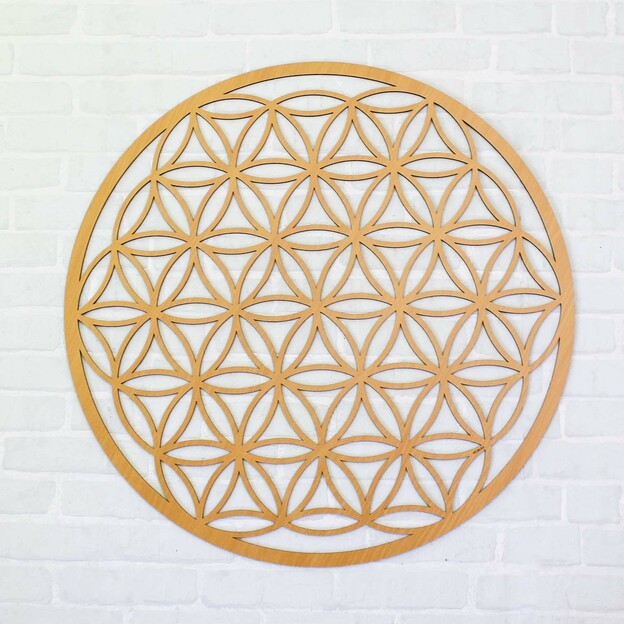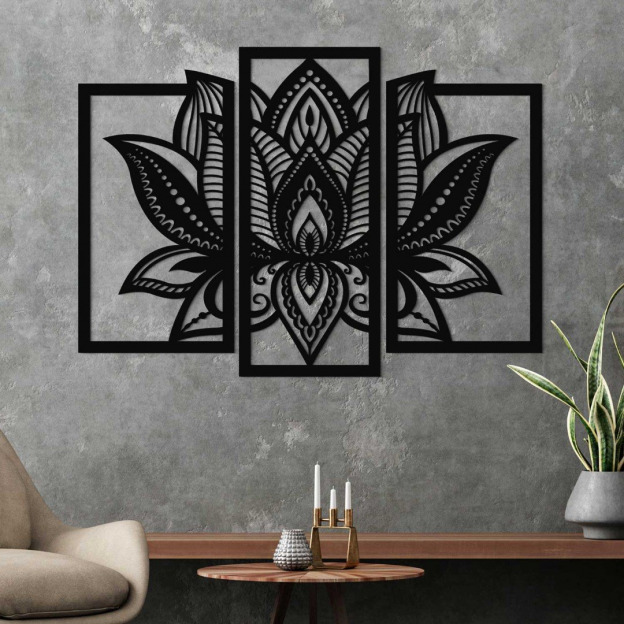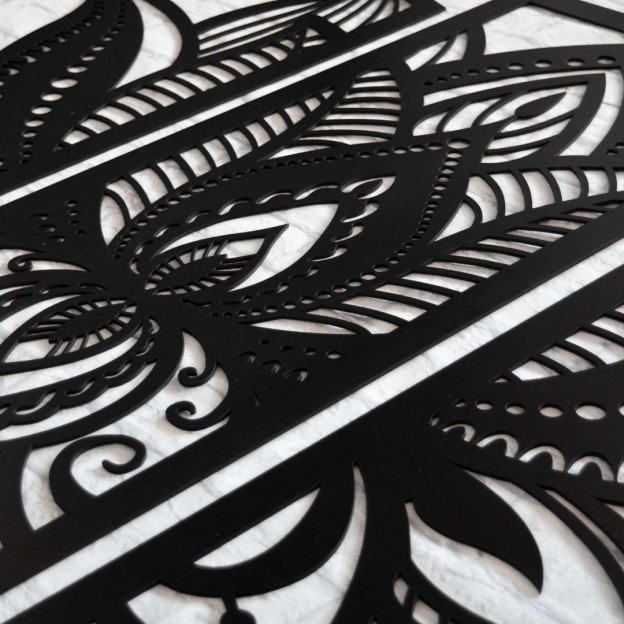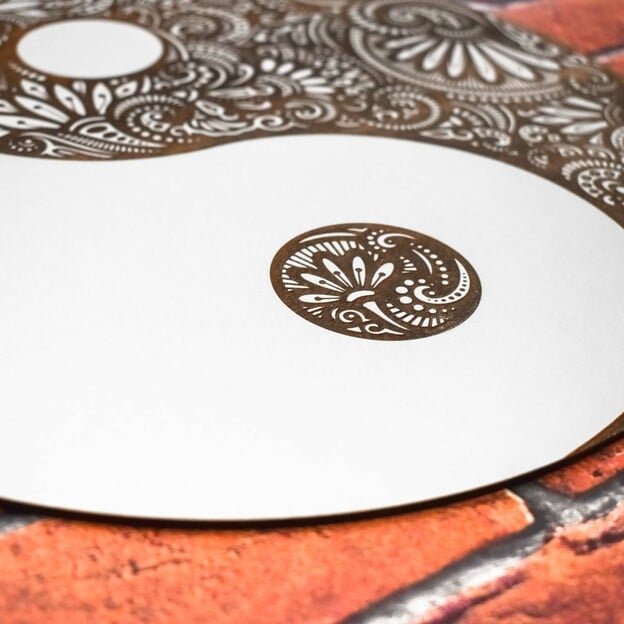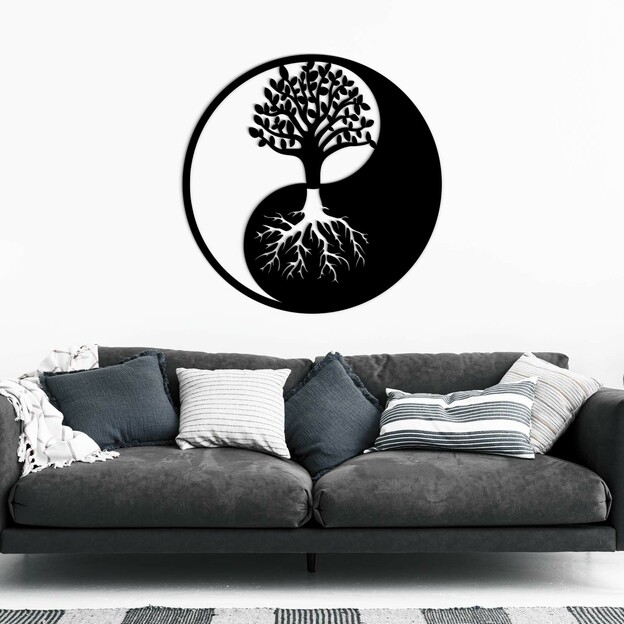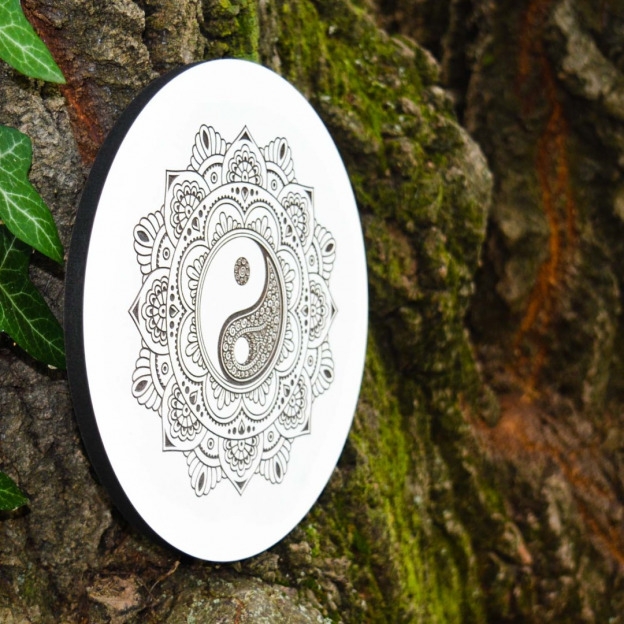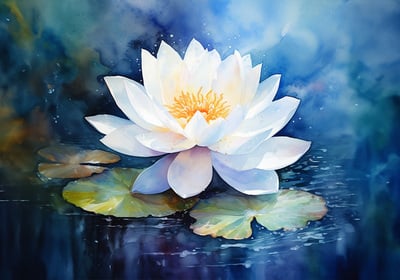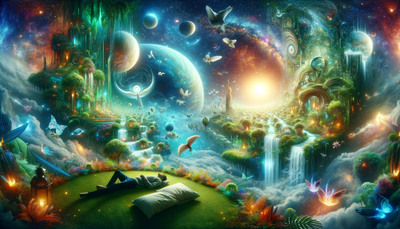
Symbols of Life - Their Spiritual Power and Meaning
We all have different definitions of life, but its universal meaning is the existence of any living being. Life is what we all share, as well as death. Since time immemorial, people have used various symbols, words, and signs to express the concept of life.
In this article, you will find:
- The secrets and meanings of symbols
- The Tree of Life - a sign of connection and growth
- Infinity - more than just a symbol
- Hamsa - a symbol of protection and strength
- The Ankh symbol - the ancient Egyptian cross of life
- Pentagram - a symbol of magical powers and protection
- The Cross - a symbol of hope and faith
- Buddha - both a symbol of Buddhism and a historical figure
- The Lotus Flower and the Flower of Life - symbols of purity and rebirth
- Yin and Yang - the symbol of duality and balance
- The meaning of the Om symbol - the eternal sound
1. The Secrets and Meanings of Symbols
Among the vast array of symbols that permeate our cultures, life symbols hold a special place. These powerful emblems represent the essence of existence and various aspects of the journey of life. They are found worldwide in art, literature, architecture, and spiritual practices, reflecting our shared human experiences and aspirations. Exploring these symbols allows us to better understand our place in the world and our connection to the life cycles that surround us. These symbols remind us of the beauty, mystery, and resilience of life, offering knowledge, inspiration, and comfort in times of uncertainty.
Since ancient times, people have used symbols to represent every significant event in life. But what could be more important in life than life itself? Throughout history, regardless of culture or religion, people have embraced and recognized crucial signs and symbols that represent life.
2. The Tree of Life - A Sign of Connection and Growth
Powerful, sacred, and extraordinarily wise, the Tree of Life is also seen as a gateway to another world. It symbolizes life-giving, sanctuary, and rebirth. The Tree of Life is one of the most important life symbols for humanity, believed to possess magical powers.
In ancient times, the Celts believed that trees held various powers and were the source of all life. The symbol of the Tree of Life has endured for centuries. It is said to represent balance and harmony across all realms, connecting the heavens, the earth, and the underworld.
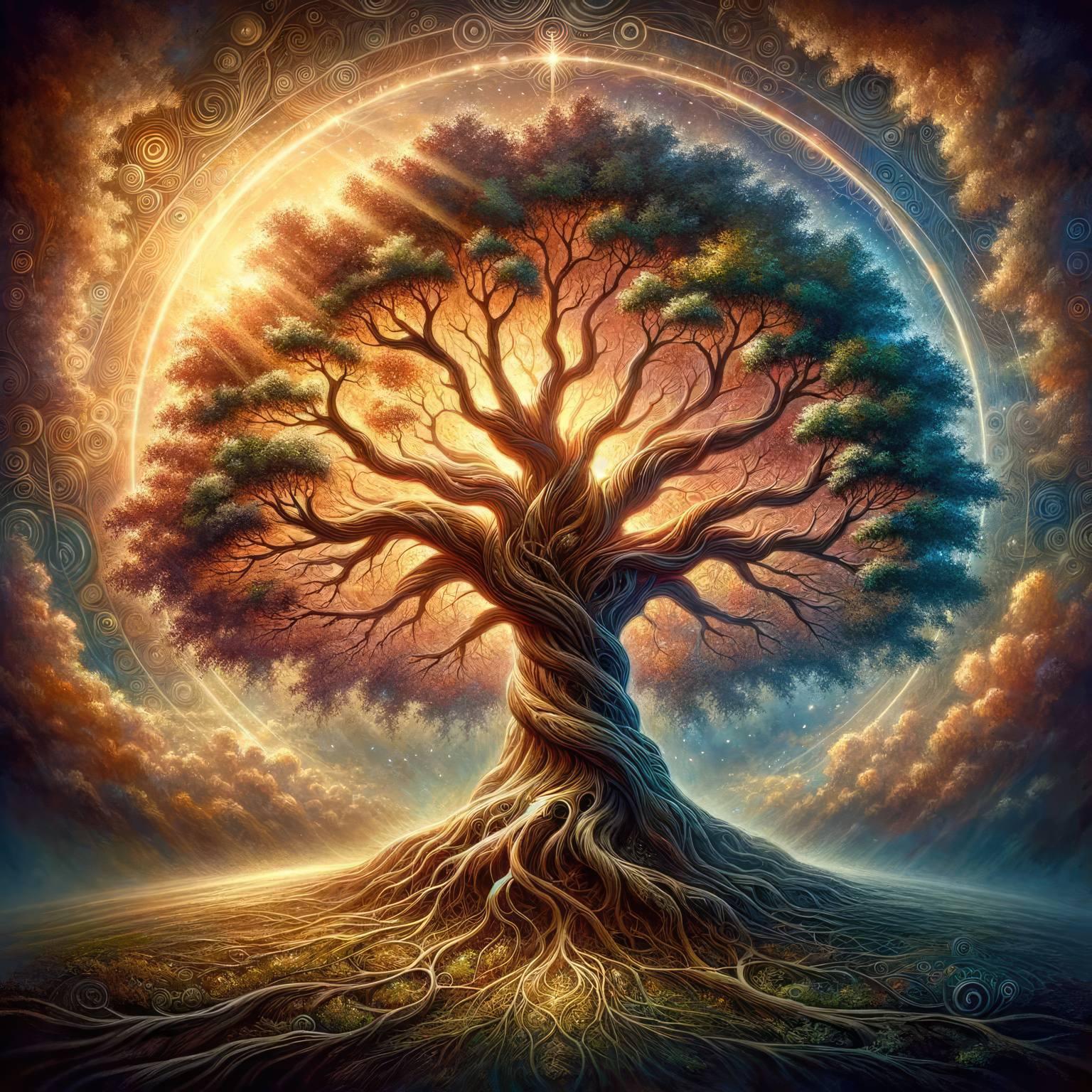 Tree of Life illustration. Source: DUBLEZ
Tree of Life illustration. Source: DUBLEZ
The branches symbolize the pursuit of knowledge and learning in life. The trunk represents the strength and unity of the family, while the flowers and fruits signify renewed growth and eternal life. The deep roots symbolize reaching into the underworld. Trees have long been considered symbols of longevity, rebirth, renewal, strength, and wisdom, and were believed to embody the spirits of ancestors.
These symbols are also very popular among our customers as beautiful wooden 3D wall decorations:
In the center of each new settlement, trees would be planted to provide essential resources such as food, shelter, and a meeting place for rituals.
The Celts are thought to have worshiped five sacred trees, the most powerful being the oak, symbolizing the center of the world and the most potent gateway to the underworld.
The pagan belief in the power of trees persists to this day. For example, Ireland is dotted with "fairy trees" adorned with medallions, ribbons, and messages from people seeking wisdom, health, or prosperity.
Ultimately, the Tree of Life may also symbolize the four elements: air, water, wind, and earth, which are essential for life.
The significance of the Tree of Life across cultures is discussed in detail in a dedicated article: What is the Tree of Life - Everything You Need to Know About Its Meaning and Symbolism.
3. Infinity - More Than Just a Symbol
The infinity symbol, also called the eternity symbol or forever symbol. The horizontal figure eight that we associate with infinity originated in mathematics. In 1655, mathematician John Wallis introduced it as a representation of infinity. Some speculate that he derived it from the Roman numeral for 1,000, CIƆ, which resembles the infinity symbol and can also mean "many."
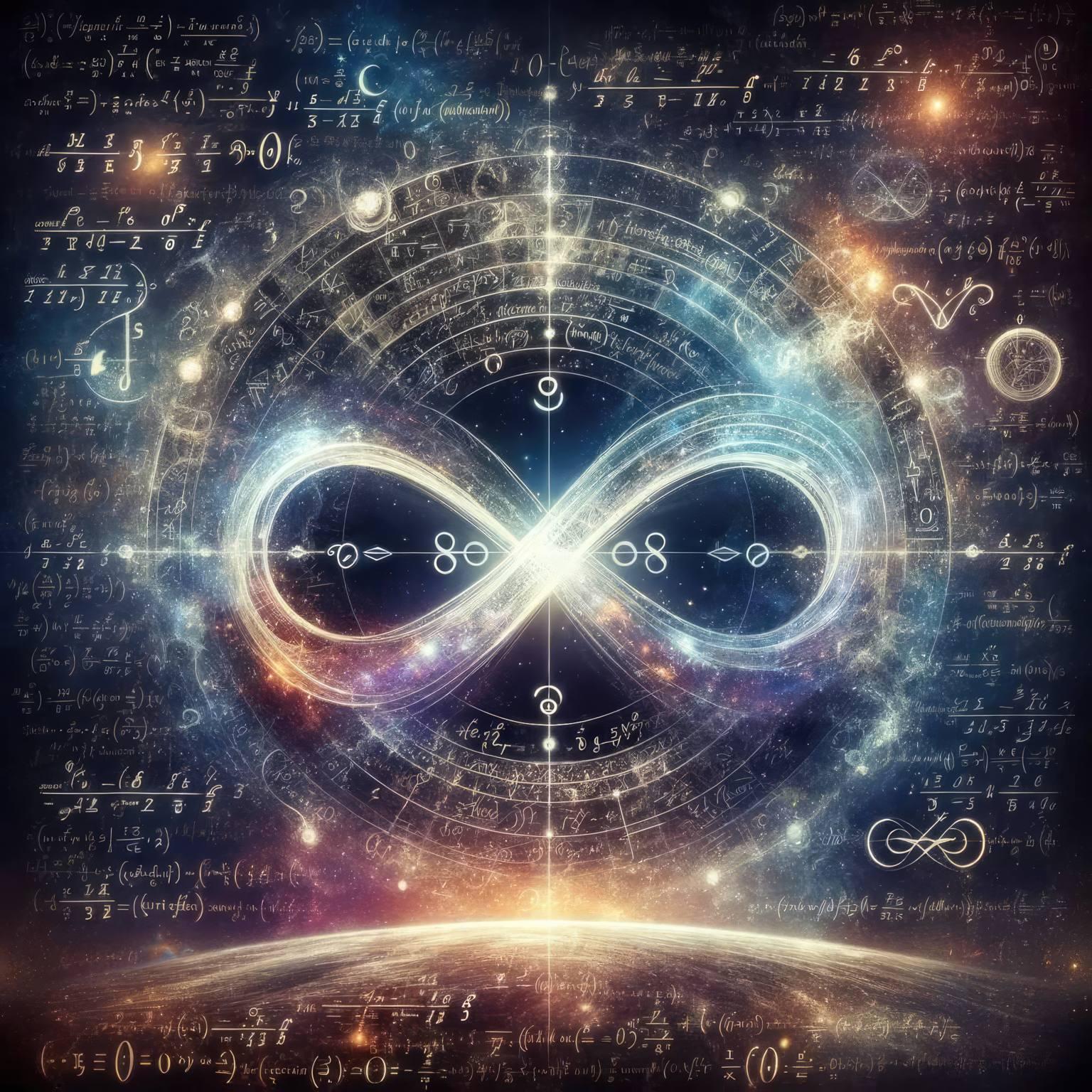
Infinity symbol. Illustration linking the mathematical representation with the infinite flow of the universe. Source: DUBLEZ
Additional interpretations of the infinity symbol:
- Representation of Ouroboros: The circular shape of two components forming the infinity symbol is linked by some mystics to the Ouroboros, a snake depicted eating its own tail, creating a circle.
- Harmony and balance: Two interconnecting loops can represent opposing forces or individuals coming together in harmony and balance, symbolizing interconnectedness between all things.
- Regeneration: On a spiritual and metaphysical level, the infinity symbol can signify regeneration and eternal life after death. It may reference the infinite and boundless capacity of God or divinity and eternal love.
- Kundalini energy: In Hinduism, the infinity symbol may depict kundalini energy, often represented as a coiled snake at the base of the spine. It can also signify the unifying nature of masculine and feminine energy.
- The Christian God: For Christians, the infinity symbol can signify God, eternal by nature. It can also reflect the eternal promises God made to His people.
- The eternity of the universe: Yoga practitioners see the infinity symbol as a representation of the perpetual existence of the universe—a cycle of destruction and creation with no beginning or end. It symbolizes unity with the universe.
- The nature of energy: Seen on some tarot cards, the infinity symbol signifies the unlimited nature of energy and the endless exchange between matter and energy, reflecting the infinite essence of our thoughts or spirit.
At DUBLEZ, we've combined the infinity symbol with love to create stunning wall decorations :)
4. Hamsa - A Symbol of Protection and Strength
The Hamsa is an ancient amulet from the Middle East symbolizing the Hand of God. Across all faiths, it is a protective emblem that brings its owner luck and health.
The Hamsa hand is known by many names—Hamsa, Hamsa Hand, Hamesh, Hamesh Hand, Khamsa, and Chamsa. It is also referred to as the Hand of Miriam, named after Moses and Aaron's sister. There are two main styles of the Hamsa hand: the most popular is the stylized Hamsa hand with two symmetrical thumbs, but there are also non-symmetrical versions shaped like real hands.

Hamsa Hand, illustration. Source: DUBLEZ
Each Hamsa hand can be worn with fingers pointing up or down, and it is believed that both offer the wearer luck, peace, prosperity, and protection.
While the Hamsa hand has been symbolic in Islam and Judaism for centuries, archaeological findings from the Middle East suggest that the Hamsa predates these religions. It originates from the Phoenicians and was used as a protective symbol for an ancient Middle Eastern goddess. The Hamsa hand has always been associated with a feminine entity offering protection against evil and misfortune.
The Hamsa Hand symbol as a wooden wall decoration from DUBLEZ:
The word "Hamsa" or "Hamesh" means five. The Hamsa hand has five digits, but the number five holds additional symbolic meaning in Jewish and Islamic traditions. Five (in Hebrew, Hamesh) represents the five books of the Torah for Jews. It also symbolizes the fifth letter of the Hebrew alphabet, "Heh," which represents one of God’s holy names. For Sunnis, it represents the five pillars of Islam, and for Shiites, the five people of the cloak.
In Judaism, the Jewish Hamsa hand also symbolizes the hand of God. In Islamic belief, the Hamsa hand symbolizes the Hand of Fatima, the daughter of the Prophet Muhammad.
Many Jews believe that the five fingers of the Hamsa hand remind the wearer to use their five senses to praise God. Hamsa hands often feature an eye symbol, which is a powerful talisman against the "evil eye," or the curse of ill-will.
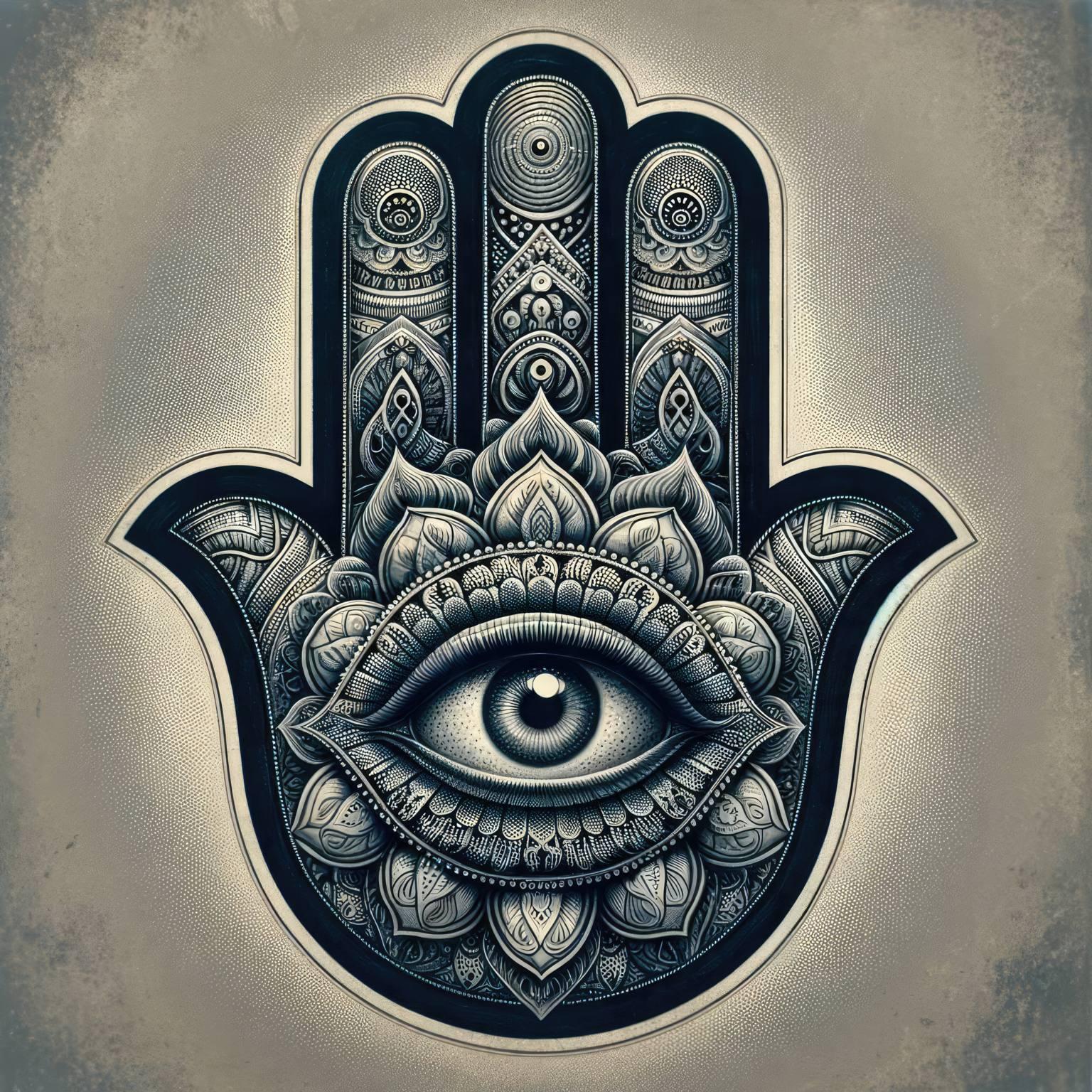
Hamsa Hand with an eye in the palm, illustration. Source: DUBLEZ
5. The Ankh Symbol - The Ancient Egyptian Cross of Life
The Ankh, sometimes referred to as the Egyptian key of life or the Nile’s key, represents eternal life in ancient Egypt. It is said that Africans created the Ankh long before the Egyptians and that it is the first – the original cross.
This Egyptian symbol of life is often depicted in the hands of prominent Egyptian figures, such as pharaohs and kings, as a way to preserve their immortality. It is also commonly seen in temples and in the hands of major Egyptian gods like Osiris, Isis, and Ra. The Ankh may also have a more physical interpretation—symbolizing water, air, and sunlight, which were essential for sustaining life in ancient Egyptian culture.

Ankh symbol, illustration. Source: DUBLEZ
Additionally, Ankhs were traditionally placed in sarcophagi to ensure life after death. While the Ankh is a well-known hieroglyph, its origins remain somewhat unclear. Due to its similarity to the Knot of Isis, some speculate that the Ankh and the Knot of Isis represent the same concept: an intricate bow. Other theories suggest that the Ankh symbolizes the connection between heaven and earth or the unity of male and female symbols.
6. Pentagram - A Symbol of Magical Powers and Protection
The Pentagram is a five-pointed star that has been used as a religious symbol for centuries. The word "Pentagram" comes from the Greek word "pentagrammon," meaning "five lines." The Pentagram is also known as the "Star of David," "Seal of Solomon," or "Goat of Mendes."
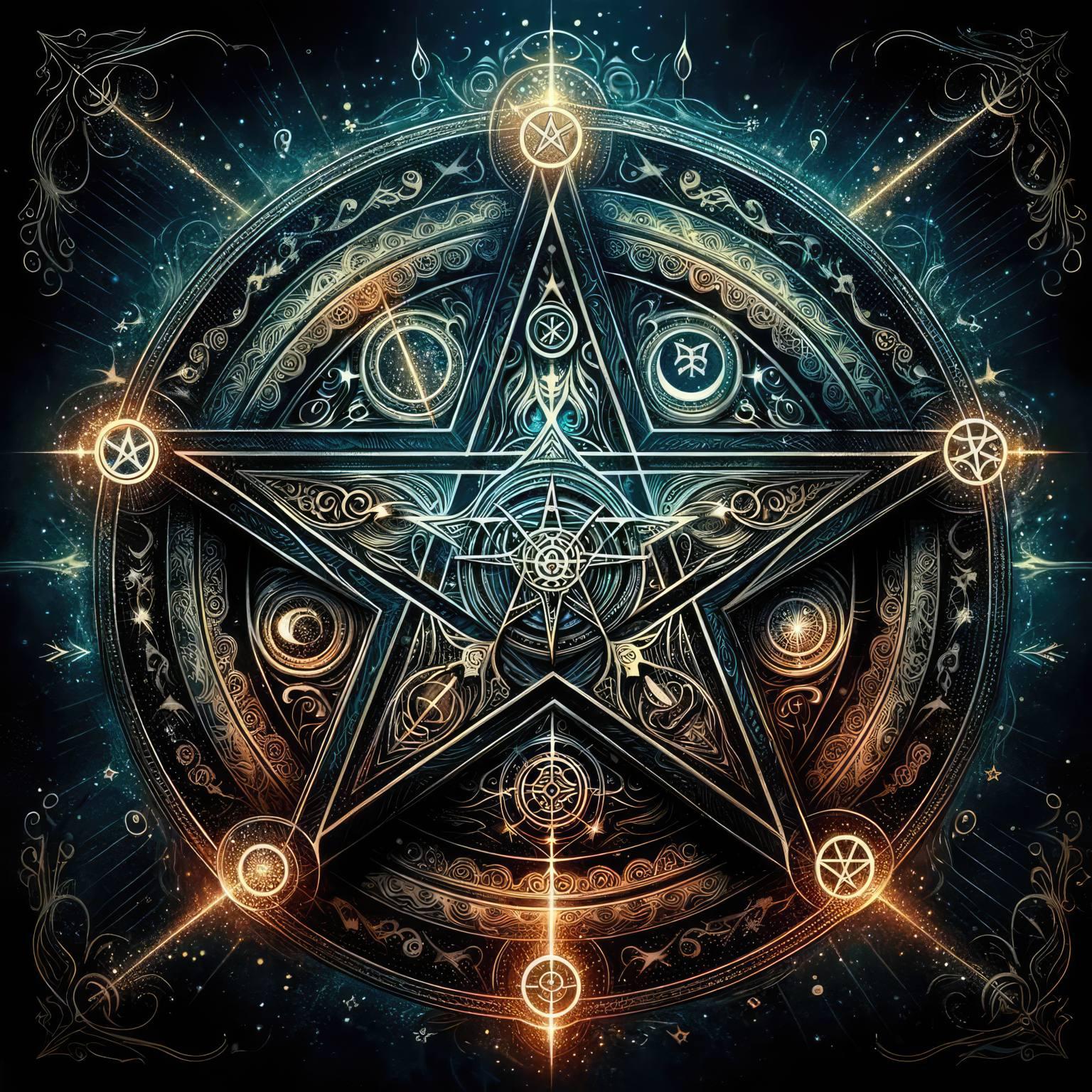
Pentagram, illustration. Source: DUBLEZ
The Pentagram is often used to represent the five elements of nature: Earth, Air, Fire, Water, and Spirit. It can also symbolize the five points of the human body: mind, body, heart, soul, and spirit. Some people view the Pentagram as a symbol of luck and protection.
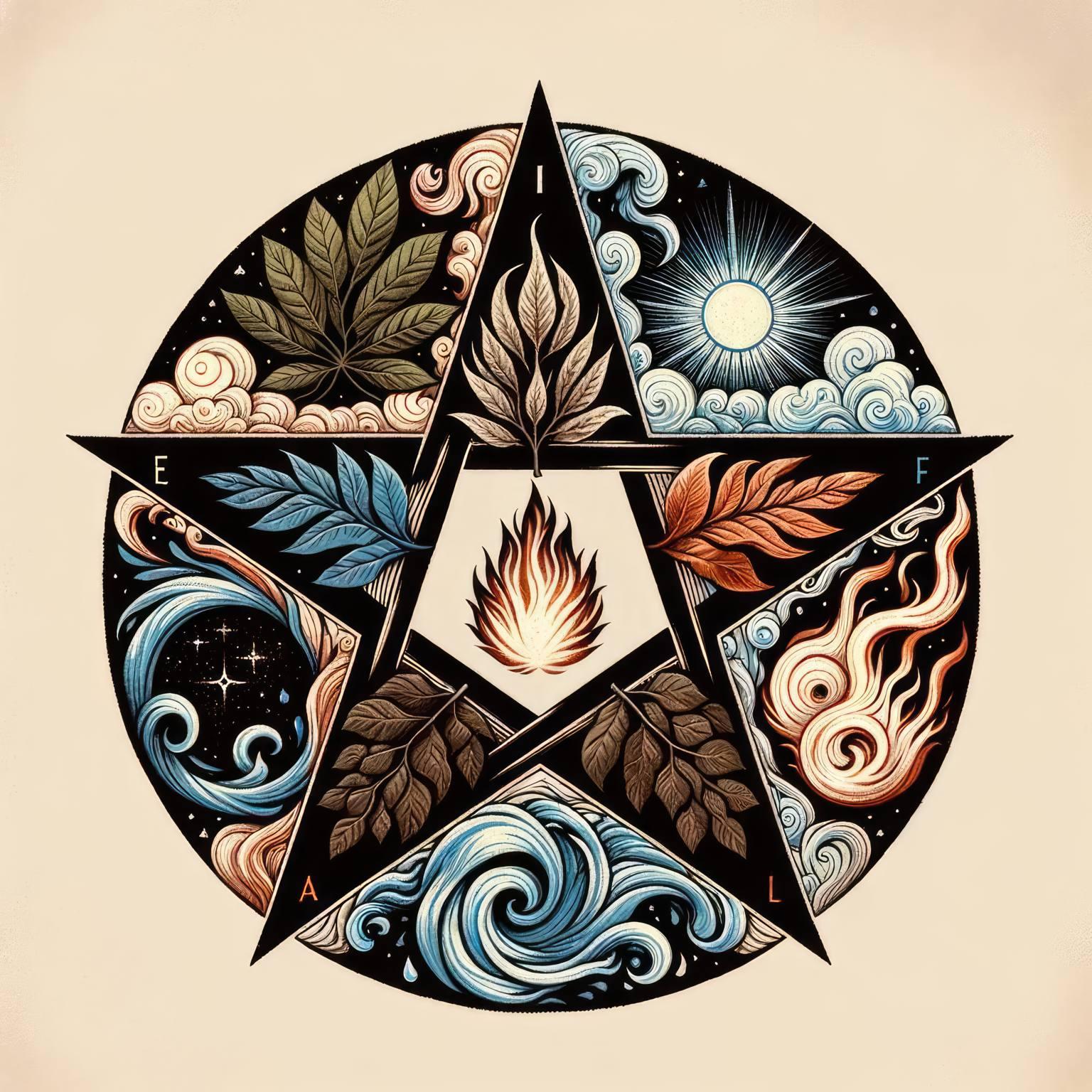
Pentagram depicting 5 natural elements, illustration. Source: DUBLEZ
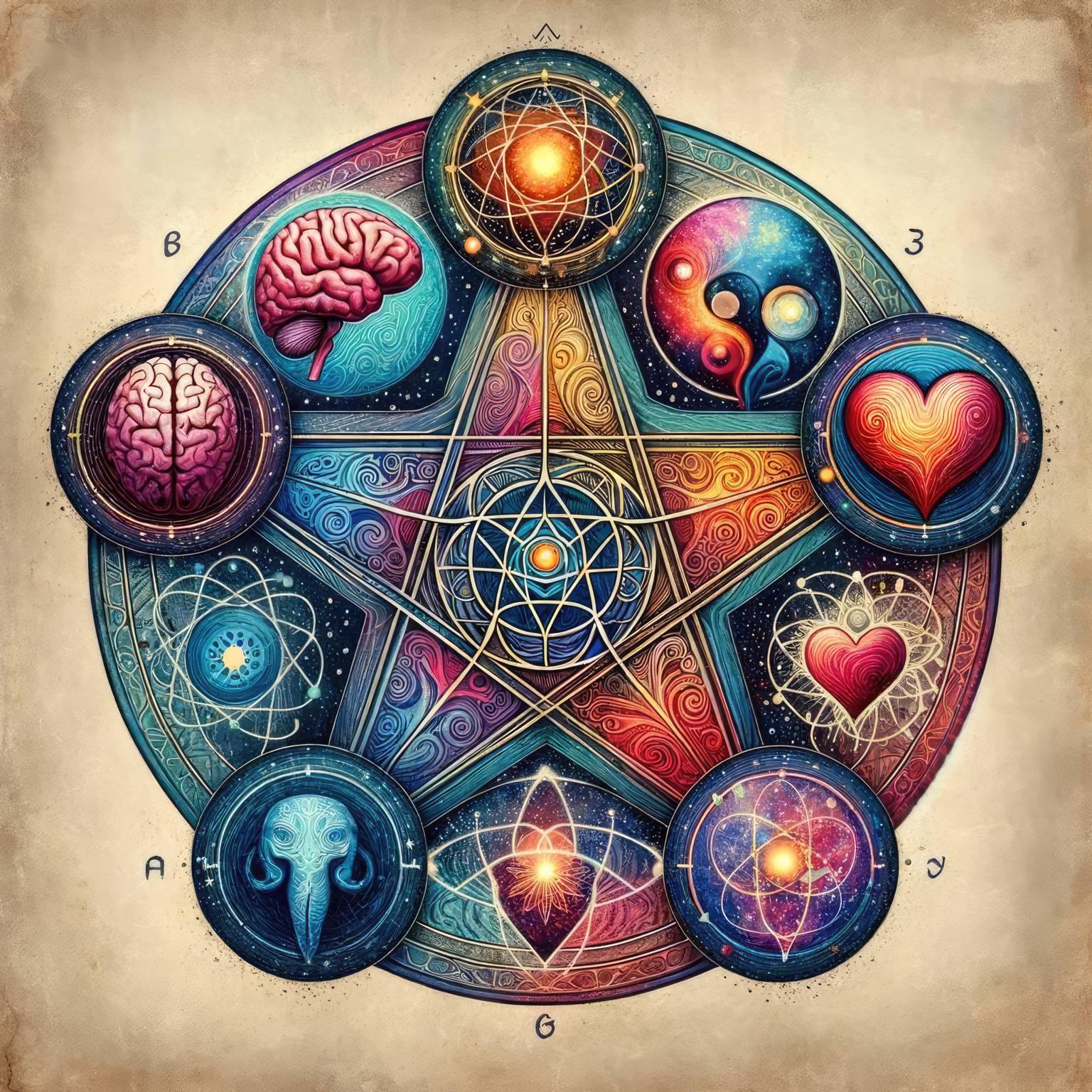
Pentagram depicting 5 parts of the human body, illustration. Source: DUBLEZ
The Pentagram is also widely used as a symbol of occultism, witchcraft, and Satanism. Some believe it is a symbol of evil and can be used to summon demonic spirits.
The Pentagram, a five-pointed star, is one of the most recognized symbols in the world. It has been used by many cultures and religions throughout history. The Pentagram holds various meanings, but it is most commonly associated with the element of Earth and the protection it offers to its user.
7. The Cross - A Symbol of Hope and Faith
Originally, the cross was a symbol of fear and offense. Romans used crosses to execute criminals, leaving them to die a slow and painful death. At the time, it was considered one of the most shameful ways a person could die. The cross was a symbol of criminals and enemies of the Roman Empire. However, with the crucifixion of Jesus, the cross took on a new meaning.
Jesus’ sacrifice brings hope to believers. Through His death and resurrection, they can be reconciled with the Heavenly Father.
Today, the empty cross is a reminder of what Jesus Christ has done for humanity. The comfort the cross brings is evident in various Christian cultures, including the Celtic cross, Greek cross, and Latin cross.
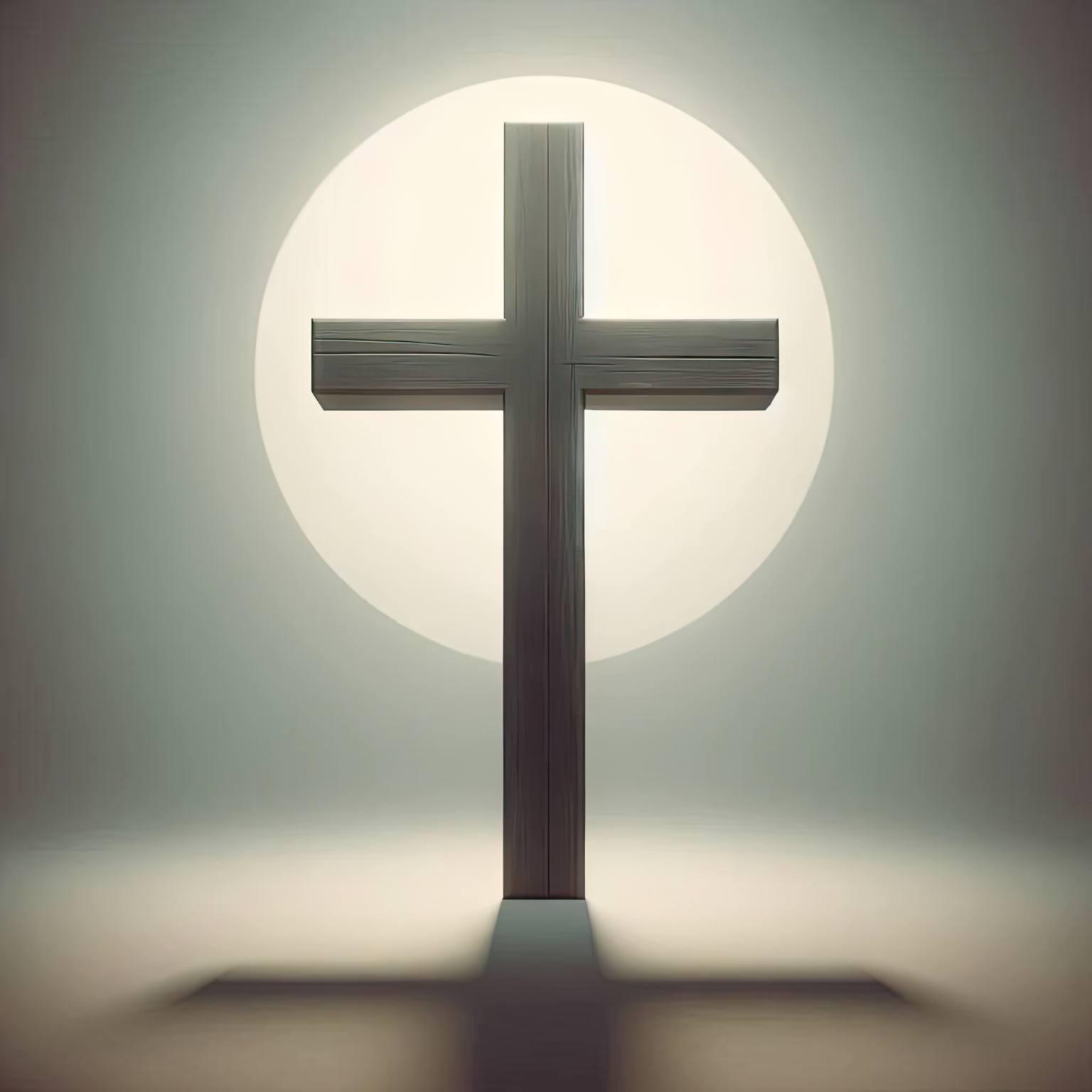
Plain wooden cross, illustration. Source: DUBLEZ
Although the cross and the crucifix may look similar, there are some key differences. For example, the crucifix depicts Jesus on the cross, whereas the empty cross does not. Each carries different meanings:
- Plain Cross: This symbol represents faith as a whole and devotion to Jesus and His teachings. The cross has long been popular among Protestant churches.
- Crucifix: This symbol represents Jesus’ suffering and is more commonly favored by the Catholic Church. Crucifixes gained popularity around the 10th century, making them a more “modern” symbol compared to the plain cross.
You can purchase the cross as a modern wall decoration from DUBLEZ:
8. Buddha - A Symbol of Buddhism and a Historical Figure
Buddhism is full of symbols. Although Buddha lived in the 6th century BCE, statues of Buddha and Buddhist symbols in India appeared around the 3rd century BCE. Since then, these symbols have represented aspects of Buddha and expressed the fundamental principles of Buddhism. As Buddhism spread to other countries, different traditions conveyed their teachings through unique symbols, which are believed to be essential for Buddhism’s survival.
These symbols can evoke inner peace and contentment or awaken deeper states of mind in those who see them. Each symbol is unique, bearing a distinct meaning or message. They can inspire us to achieve our greatest desires, values, and potential.
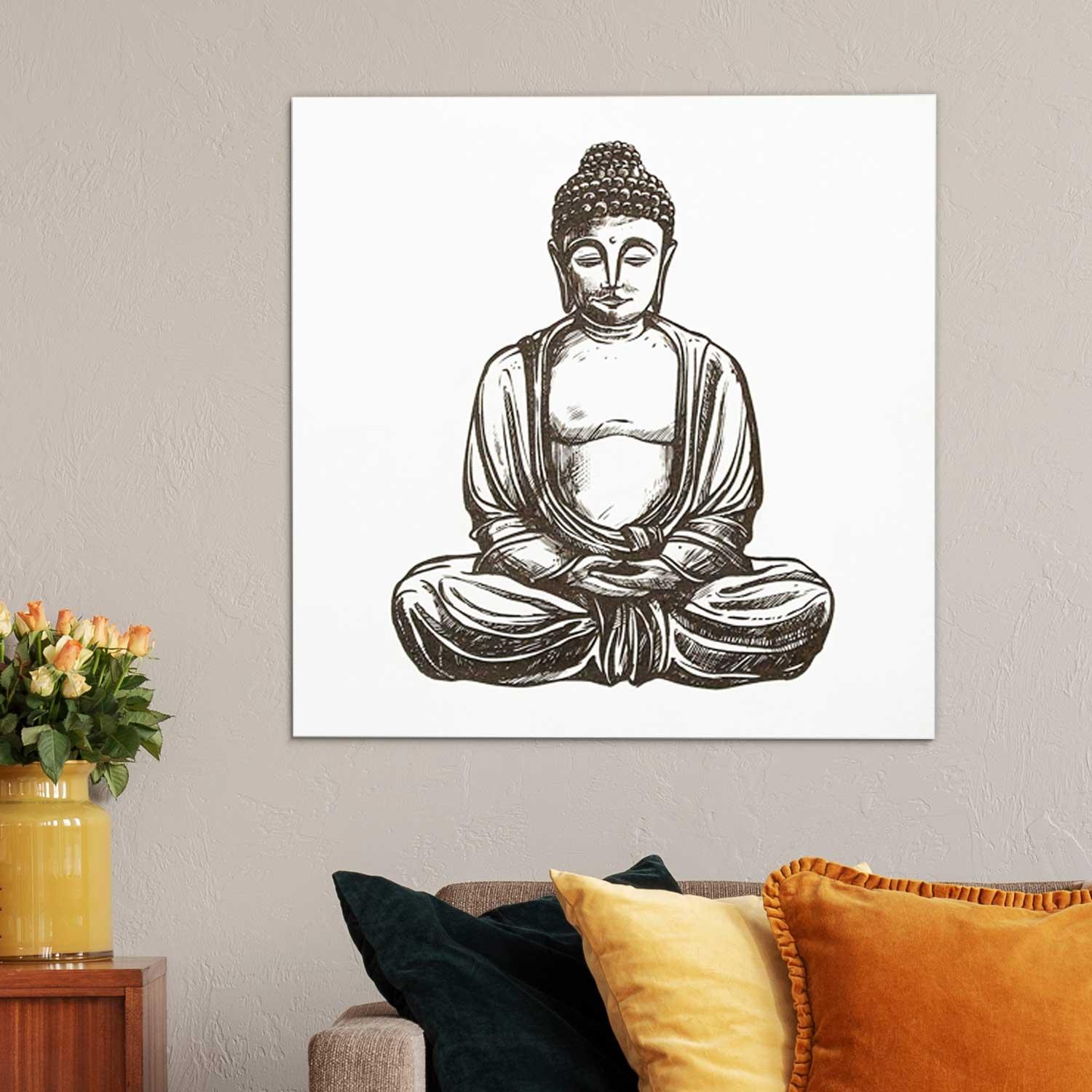
Buddha representation as a 3D wooden engraved wall art by DUBLEZ
Buddha is not a name but a title. It is a Sanskrit word meaning “one who is awake.” In simple terms, Buddhism teaches that we all live in a fog of illusions created by misconceptions and “impurities” such as hatred, greed, and ignorance. A Buddha is one who is free from this fog. It is said that when a Buddha dies, they are not reborn but pass into the peace of Nirvana—a transformed state of existence, not a “heaven.”
Most commonly, when someone mentions “Buddha,” they refer to the historical figure who founded Buddhism. This man, originally named Siddhartha Gautama, lived in what is now northern India and Nepal around 2,500 years ago.
When Buddha attained enlightenment, he realized something profound: his insight was so far removed from ordinary experience that it could not be fully explained. So, instead of teaching people what to believe, he taught them how to realize enlightenment for themselves.
9. The Lotus Flower and the Flower of Life - Symbols of Purity and Rebirth
The meaning of the lotus flower varies across cultures. Generally, the lotus serves as a sacred symbol of purity, rebirth, and strength. Because lotuses emerge from muddy waters unblemished, they are often seen as symbols of purity. Since they return to murky waters each evening and bloom anew with the morning light, lotus flowers also represent resilience, strength, and renewal. Additionally, the lotus signifies transcendence: it symbolizes the human spirit rising above worldly matters, blooming from darkness into light.
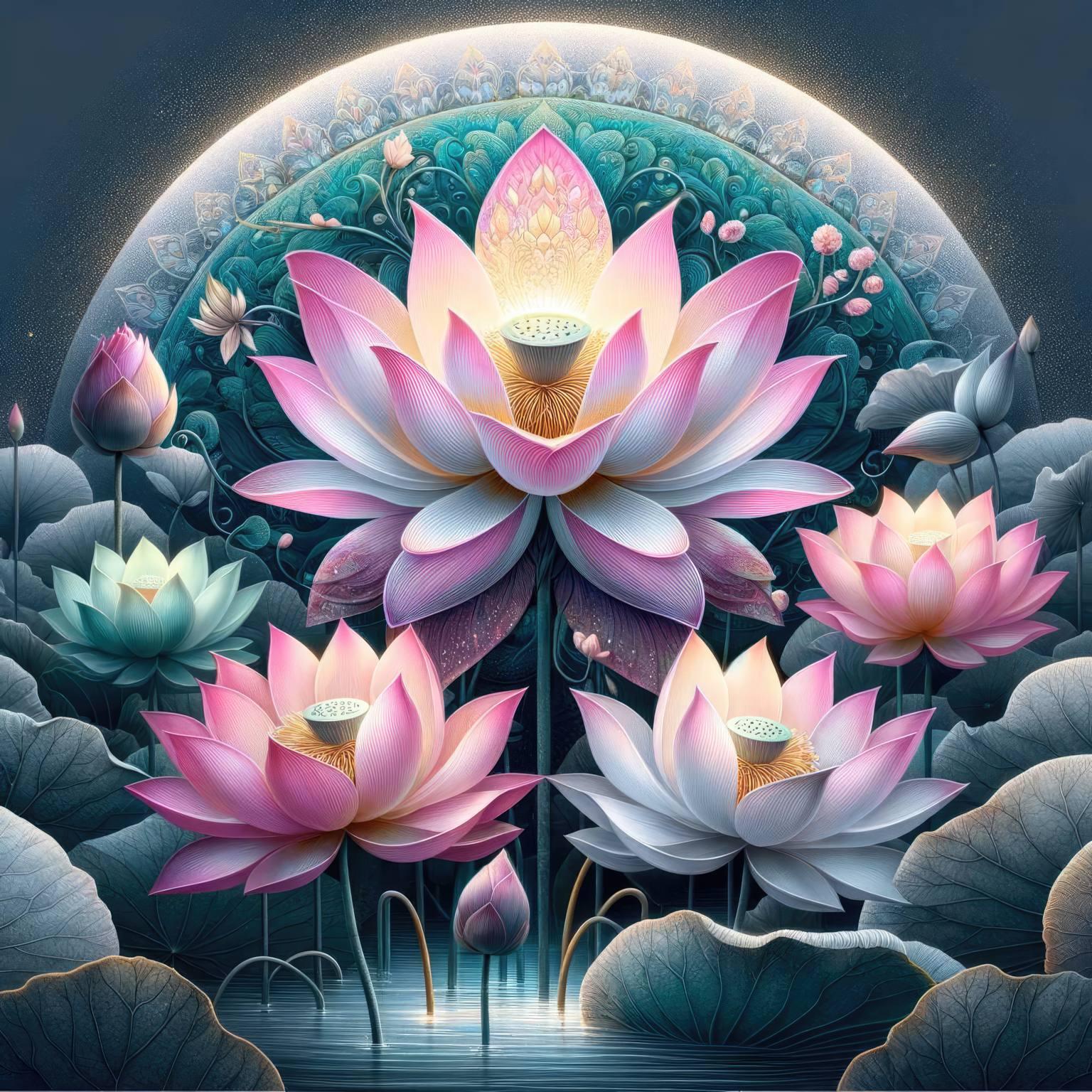
Lotus flower, illustration. Source: DUBLEZ
We explore the lotus flower in depth in our dedicated article: "Universal Symbol of Happiness - The Lotus Flower." It’s a detailed piece we recommend to anyone interested in this symbol.
The Flower of Life is one of the most revered symbols in both ancient and modern times. This sacred geometric pattern consists of 19 interlocking circles evenly spaced, creating a complex design of overlapping symmetrical floral shapes.
This distinctive visual symbolizes creation, divine masculinity and femininity, and the cycles of life, death, and rebirth. Some believe the Flower of Life is a key to unlocking hidden knowledge of time and space within its petal-like structures.

Flower of Life drawn in sand, illustration. Source: DUBLEZ
The Flower of Life is considered a mandala due to its symmetrical structure. If you are curious about the mystery and meaning of mandalas, we recommend our comprehensive article: "What Does a Mandala Mean? Its Significance and Origin"
Both the lotus flower and the Flower of Life are not only rich in meaning but also serve as tasteful and modern home decorations. They are among the most popular designs in our DUBLEZ collection.
10. The Yin and Yang Symbol - Harmony of Duality and Balance
The principle of Yin and Yang originates from the Chinese text "Book of Changes" (Yijing). Its primary religious or philosophical context lies in Taoism. The basic idea of the Yin-Yang principle is straightforward: everything in the world has its inevitable opposite.
According to the philosophy of Yin-Yang, two opposing forces are in constant alternation: after a high phase comes a low phase, and rest follows movement, and so on. You might experience this in your everyday life—some days you feel energized and upbeat, while others you might have low energy and feel down.
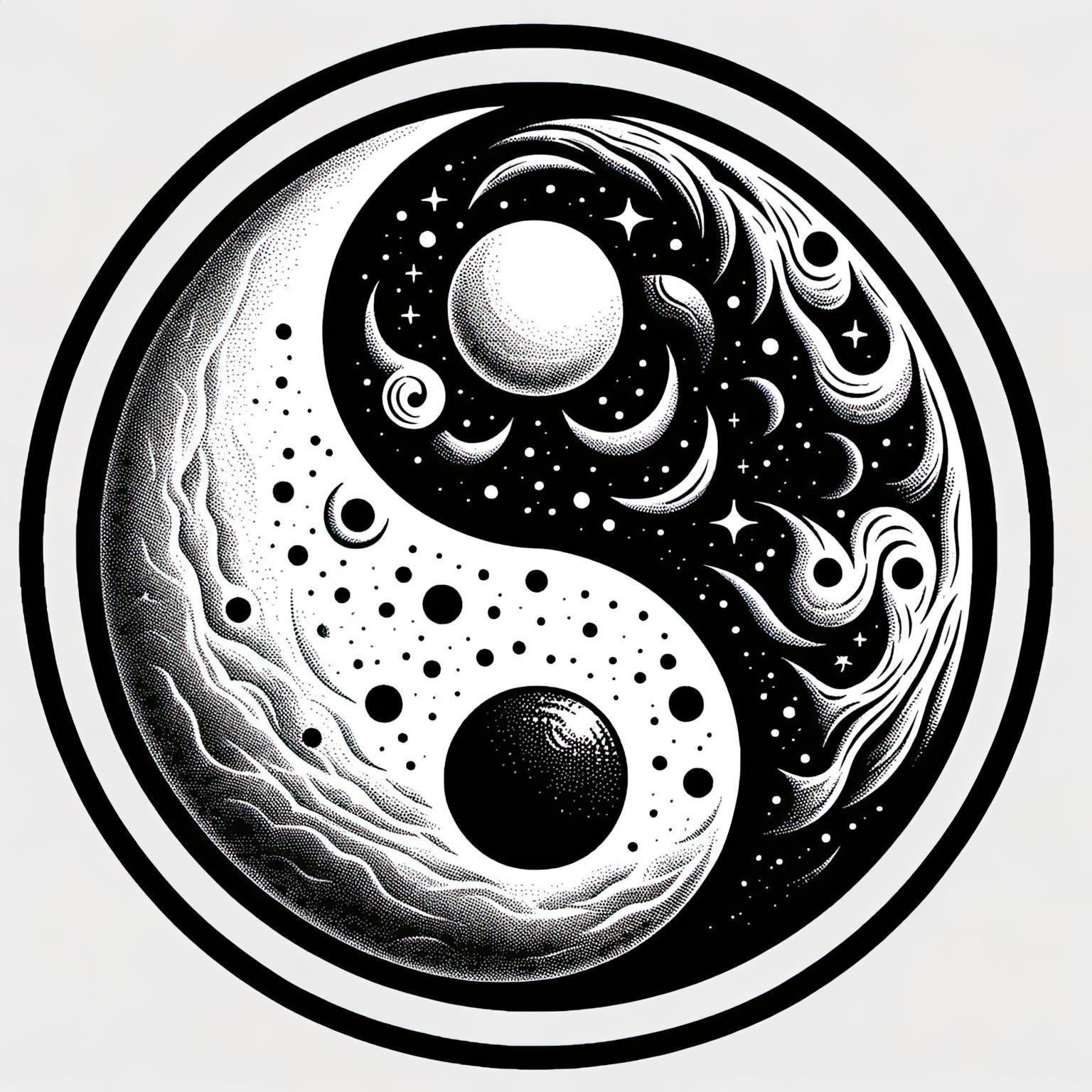
Yin and Yang symbol, illustration. Source: DUBLEZ
When you think of Yin and Yang, the image of a small, circular, black-and-white symbol often comes to mind. This symbol, called Taijitu in Chinese, does not represent the entirety of Yin and Yang but embodies individual balance between forces. The black area (Yin) symbolizes darkness, tranquility, passive reception, femininity, and softness. The white area (Yang), on the other hand, represents the sun, brightness, warmth, active giving, and masculinity.
At DUBLEZ, we are big fans of the Yin and Yang symbol, which is why it is available as a 3D wooden wall decoration:
11. The Meaning of the Om Symbol - The Sound of Eternity
Om (also spelled Aum) is the foundation of Hinduism and is considered the very first sound of the universe. Before the sound of "Om," there was nothing. It is essentially everything, encompassing the entire universe in a single sound. Om represents the unity of mind, body, and spirit. It also has connections to Buddhism, where it signifies compassion and interconnectedness.
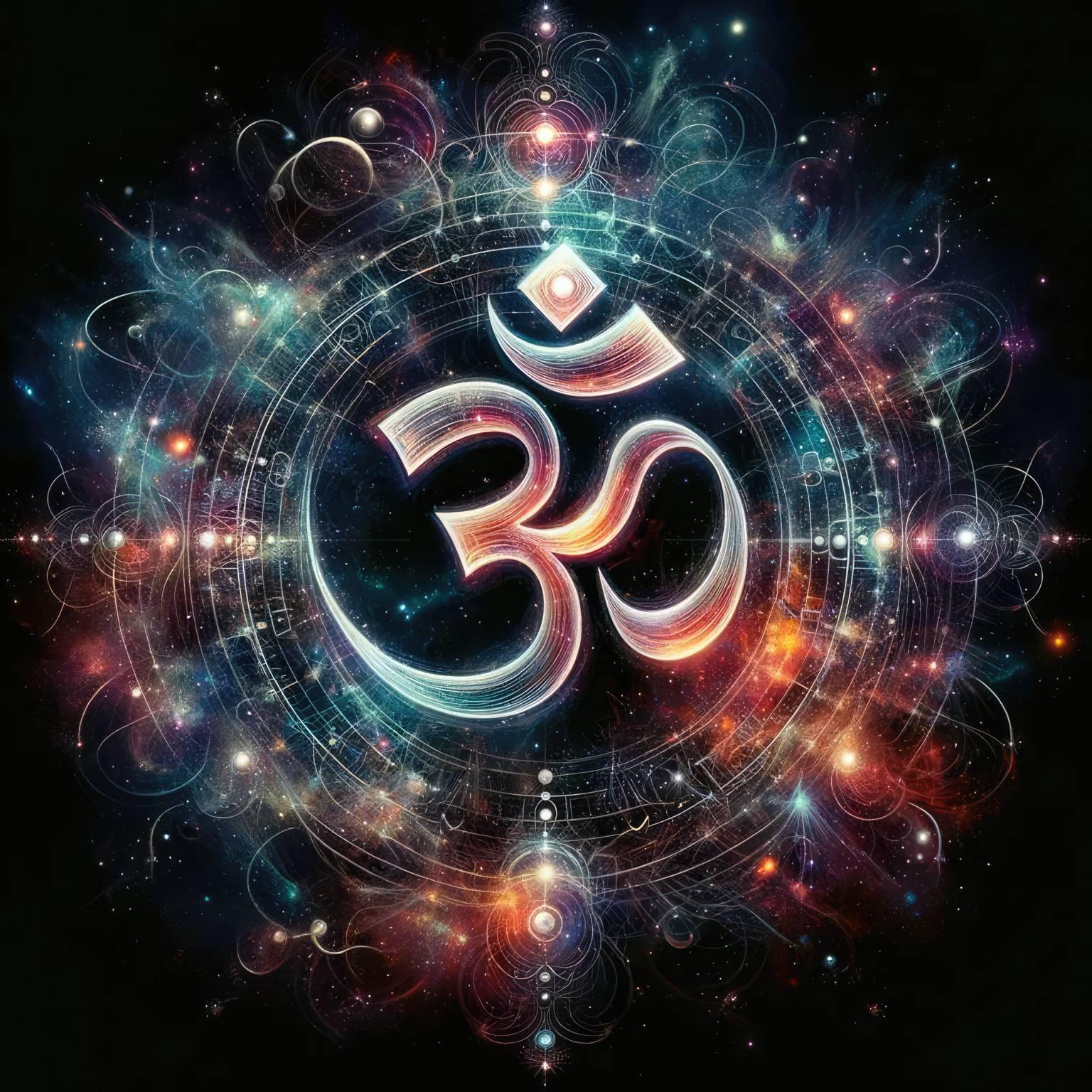
Om symbol, illustration. Source: DUBLEZ
The physical Om symbol consists of curves and lines that represent five states of consciousness:
- The lower left curve signifies the waking, conscious state.
- The upper left curve represents the unconscious state.
- The lower right curve symbolizes the dream state—a transition between wakefulness and unconsciousness.
- The semicircle at the top represents Maya, the “illusion,” which is the greatest obstacle to spiritual growth.
- The dot at the top stands for the absolute state, the ultimate consciousness, the highest state of spiritual bliss where one simply exists.
Om as a wooden decoration by DUBLEZ? Absolutely, yes!
11. The Meaning of the Om Symbol - The Sound of Eternity
Om (also spelled Aum) is the foundation of Hinduism and is considered the very first sound of the universe. Before the sound of "Om," there was nothing. It is essentially everything, encompassing the entire universe in a single sound. Om represents the unity of mind, body, and spirit. It also has connections to Buddhism, where it signifies compassion and interconnectedness.

Om symbol, illustration. Source: DUBLEZ
The physical Om symbol consists of curves and lines that represent five states of consciousness:
- The lower left curve signifies the waking, conscious state.
- The upper left curve represents the unconscious state.
- The lower right curve symbolizes the dream state—a transition between wakefulness and unconsciousness.
- The semicircle at the top represents Maya, the “illusion,” which is the greatest obstacle to spiritual growth.
- The dot at the top stands for the absolute state, the ultimate consciousness, the highest state of spiritual bliss where one simply exists.
Om as a wooden decoration by DUBLEZ? Absolutely, yes!































































